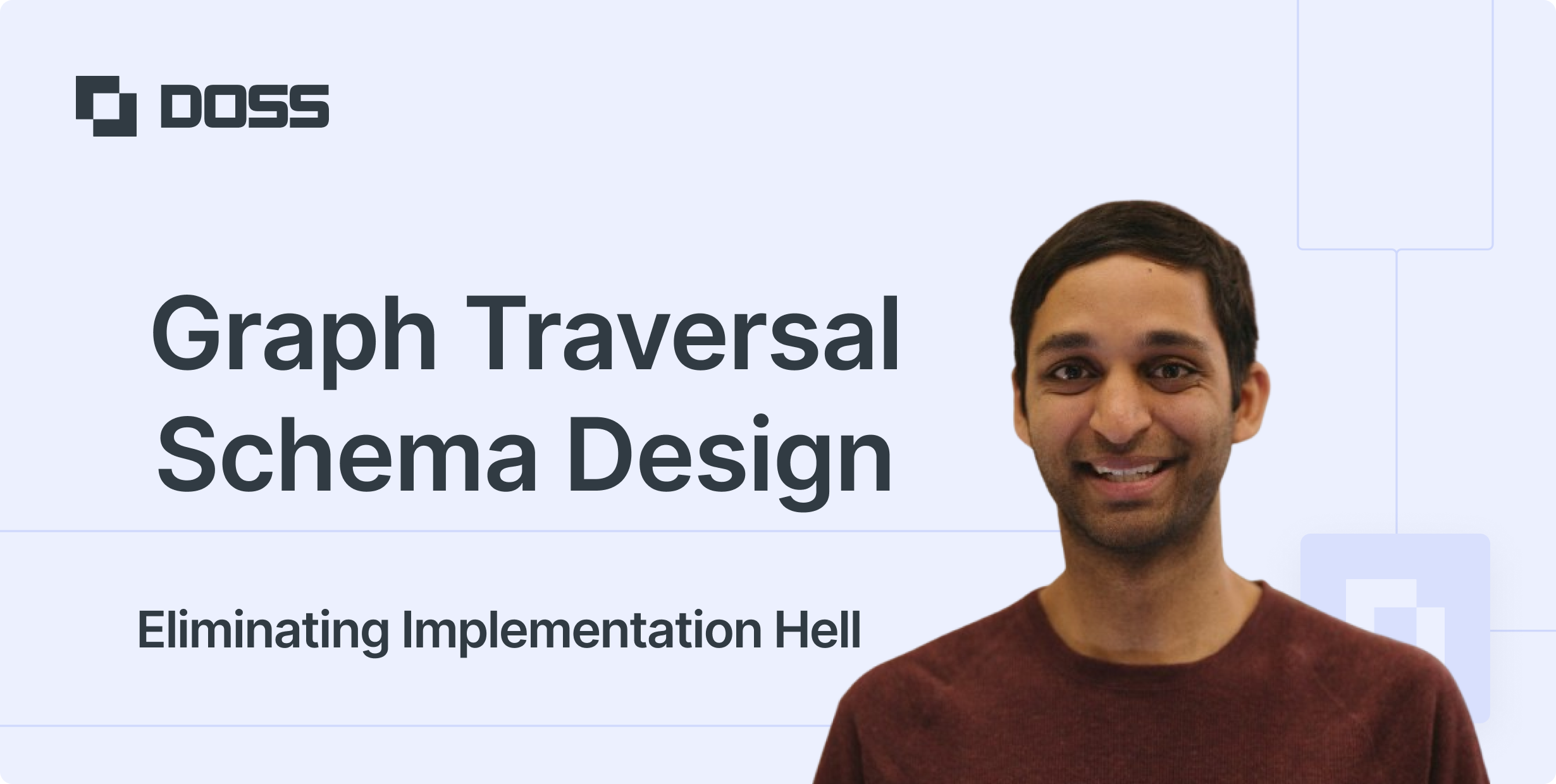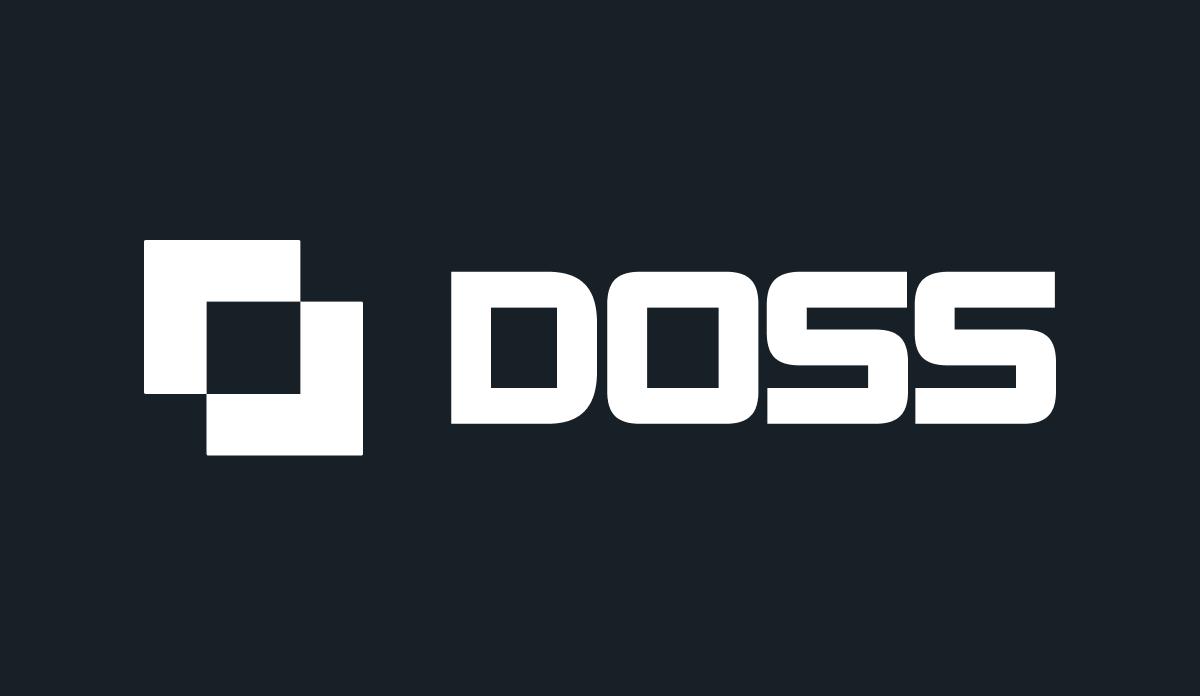In the early 2000s, Larry Ellison had a vision that would define, and ultimately curse, enterprise software for decades. Faced with the mounting complexity of integration suite buildouts, Oracle's founder advocated for something radical: a single software to rule them all. No more fragmented systems. No more costly integrations. Just one centralized platform that could handle everything without needing to connect to third-party systems.
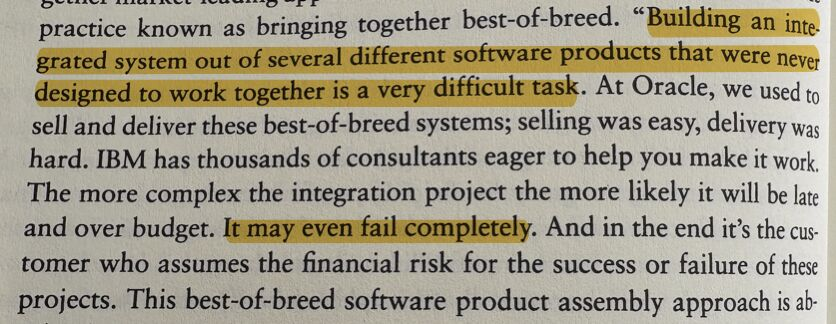
When "One Platform to Rule Them All" Became the Problem
Oracle's attempt to become best-in-class across the entirety of enterprise software created exactly what Ellison sought to prevent. The platform collapsed under its own weight, morphing into a sprawling monster that required armies of consultants to implement. Today, Oracle ERP deployments carry a failure rate exceeding 55% —a staggering indictment of the very approach that promised to eliminate risk.
As Ellison himself noted, the customer assumes the risk of this failure. Multi-year implementations. Budgets blown by orders of magnitude. Systems that work against the business rather than for it.
The Pendulum Swings: From Monolith to Chaos
The industry's response was predictable: complete fragmentation. If one massive system couldn't work, surely dozens of specialized, "verticalized" solutions would. Today's corporate software ecosystem resembles what my co-founder Wiley aptly describes as "a Coachella roster"—hundreds of vendors, each claiming to be the best at solving one specific problem.
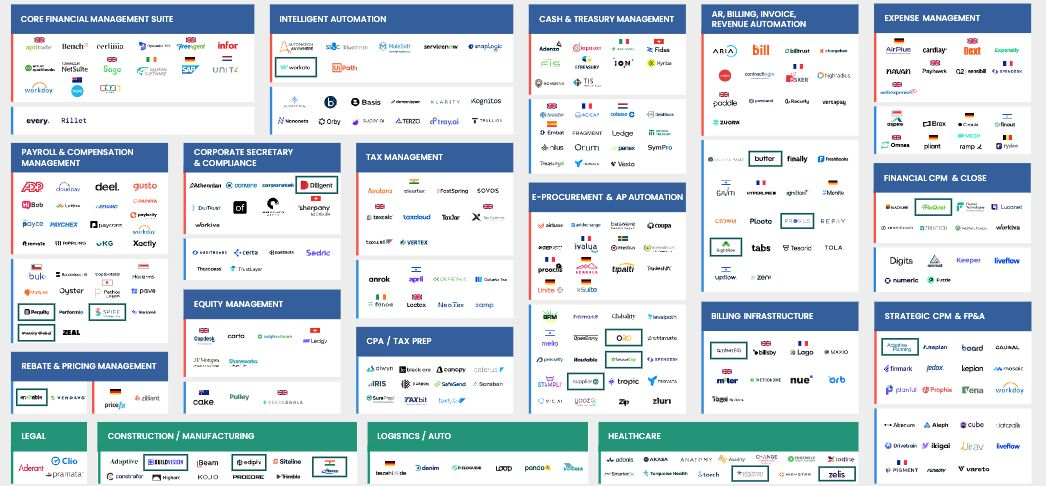
But this created a different nightmare entirely. The need for integrated systems became more critical than ever, yet interoperability now depended on armies of "solution integrators," endless manual CSV manipulations, and a growing constellation of iPaaS automation tools trying to hold it all together.
The cruel irony? Growing companies, even those with no software product, now must hire entire software teams or outsourced (unpredictable) consultants to manage the fragile connective tissue across their spiderweb of applications. There is no single source of truth.
The First Principles Solution: DossIDP
At DOSS , as we seek out to build the centralized system of record for our customers, we encountered the exact same fundamental problem that Oracle and countless others had faced. But instead of repeating their mistakes, we approached it from first principles, backed by decades of software advancement that previous generations didn't have access to.
The result is DOSS IDP (Integrated Data Platform)—an AI-native approach that drastically shrinks both the cost and complexity of building customizable integrations. But how exactly did we solve what so many others couldn't?
The Two Hard Problems of Integration
Every integration faces two core challenges:
2. Per-customer, per-integration customization
Authentication, while historically painful, has become significantly more manageable. After building dozens of integrations, we recognized that most authentication boils down to a handful of core formats: basic auth, API keys, OAuth 2.0, and a finite number of others.
We solved this with a secrets encryption store for credential management and a set of extensible authentication classes. Setting up auth for a new system now takes near zero time today. That includes comprehensive connectors for traditionally difficult systems like FTP servers, EDI integrations, and SOAP-based APIs.
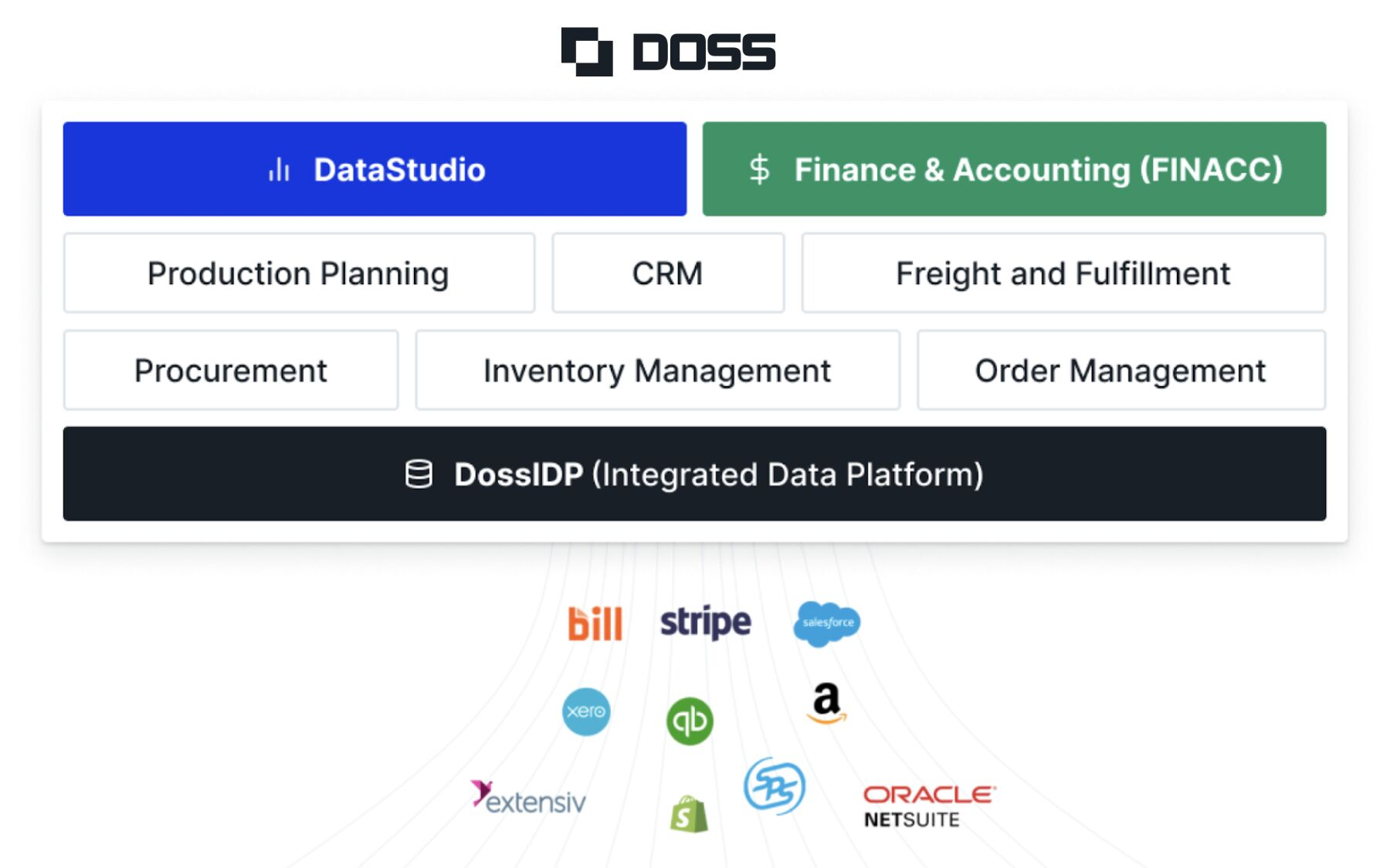
The Customization Trap
The real killer has always been customization logic. Traditional approaches create branching nightmares in codebases—complex per-customer requirements that become exponentially harder to maintain as the customer base scales and new engineers join messy, legacy solutions.
DOSS IDP takes a fundamentally different approach with two key innovations:
Schema-Driven Configuration
Our entire integration configuration is driven by simple schema files that articulate inputs, outputs, and error cases for specific systems. For any integration with API documentation, we can generate these schemas in one-shot using off-the-shelf AI foundation models. This eliminates the need for custom code paths for each integration.
User-Customizable Workflows
Here's where it gets interesting: our integrations are just components within user-customizable workflows. For example, when a webhook arrives from a third-party system, it triggers a series of ETL steps that users can customize through a no-code builder before committing data to their DOSS database or writing to another external system.
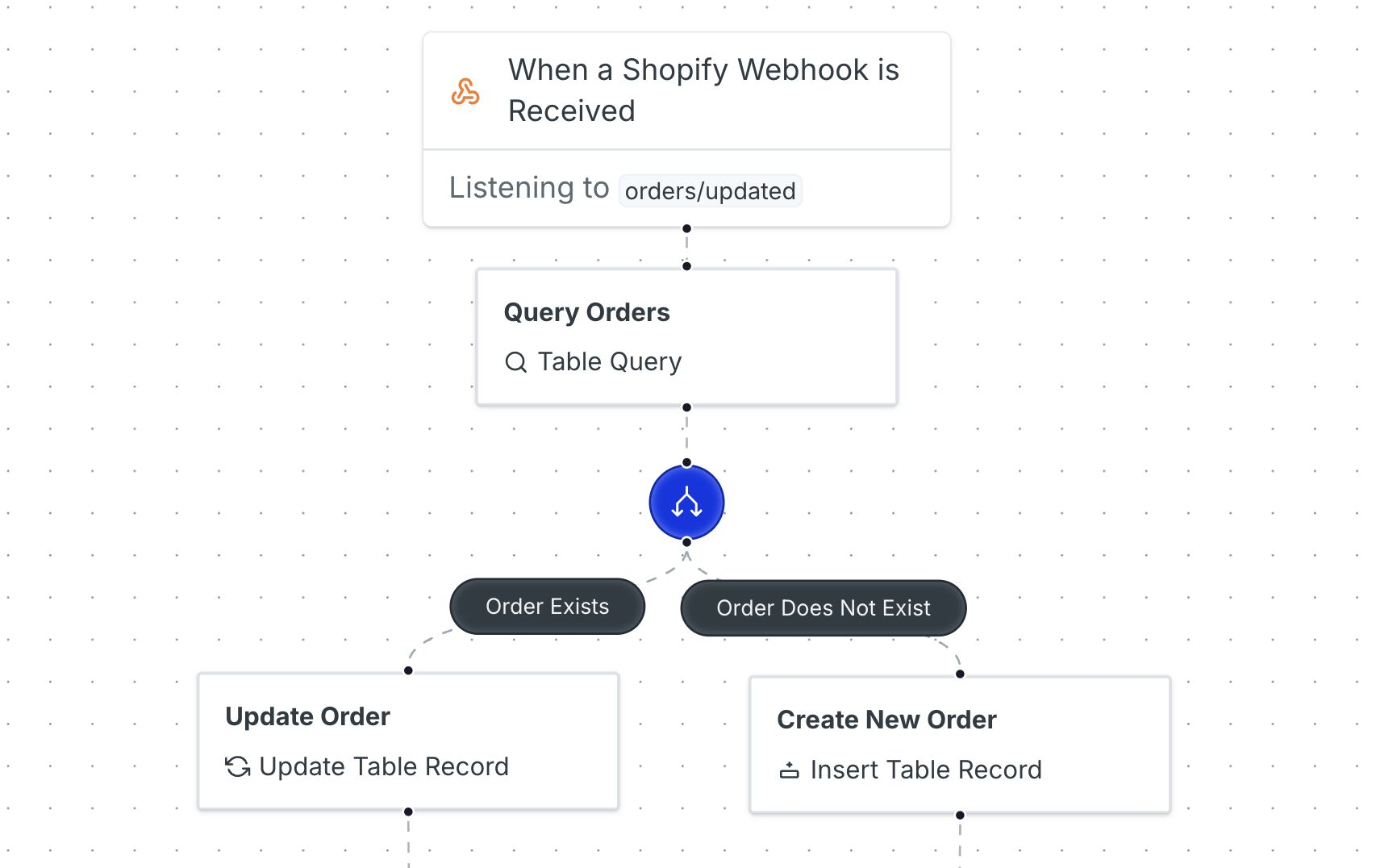
This approach moves the complexity of per-customer logic out of our codebase and into users' hands. They configure exactly how their data should flow, transform, and connect—without requiring our engineering team to build custom solutions for every edge case.
This is often the core “magic” of a traditional iPaaS system. As integrations and workflows both become commoditized, more systems will include broad integration suites out of the gate.
The Result: Integration in Hours, Not Months
The entire effort for building a new integration into Doss now consists of two steps:
- Extending the appropriate authentication system
- Generating the relevant schema files
That's it. Once these pieces are in place, customers can immediately begin configuring their data flows through our workflow builder.
What This Means for Operations
This is a fundamental shift in how enterprise software can work. Instead of choosing between Oracle's monolithic complexity or today's fragmented chaos, businesses can now have truly integrated operations without assuming the traditional risks.
Companies can maintain their best-of-breed tools while ensuring all their data flows through a single source of truth. They can customize their workflows without requiring custom development. They can scale their integrations without scaling their technical debt.
Larry Ellison's original vision was correct: businesses need integrated systems centered around a primary source of truth. His execution was flawed because the technology wasn't ready. Today, with AI-native approaches and decades of software advancement, we can finally deliver on that promise—without the complexity that killed it the first time.
The future of enterprise software isn't about choosing between integration and simplicity. It's about having both.
%20(1).png)
